Tengboche Monastery Trek is a trekking package in the classic Everest region. In this trek you will be traversing across the natural wonder of the Khumbu region, learning about the ancient cultures and traditions of the mountain people. The 8 days Everest Tengboche Monastery Trek is designed as a combination of cultural, spiritual, and natural beauty providing trekkers with a special opportunity to witness all these wonders in this short trip.
Trek Overview:
The Tengboche Monastery, also known locally as Thyangboche or Dawa Choling Gompa. It stands as a majestic landmark in the heart of the Khumbu Valley, Nepal. Nestled amidst the awe-inspiring Himalayas at a staggering elevation of 3,867 meters (12,687 feet). This Tibetan Buddhist monastery reigns supreme as the largest religious complex in the entire region. For the Sherpa people who call this valley home, Tengboche holds immense cultural and spiritual significance.
The monastery’s location itself is breathtaking. Perched atop a ridge at the confluence of the Dudh Koshi and Imja Khola rivers, Tengboche boasts a panoramic backdrop unlike any other. The mighty peaks of Ama Dablam, Nuptse, Lhotse, and countless other Himalayan giants stand sentinel, creating a scene of unparalleled beauty and grandeur.
Tengboche Monastery
A trek to Tengboche Monastery is an experience that goes far beyond just reaching a destination. It’s a journey of discovery, a chance to immerse yourself in the heart of the Khumbu Valley. The adventure typically begins with a thrilling flight from Kathmandu to Lukla, a small airstrip nestled amidst the mountains. From there, the trek unfolds, taking you through picturesque Sherpa settlements, each with its own story to tell. You’ll be constantly rewarded with breathtaking vistas of the Himalayas, their snow-capped peaks glistening under the sun.
The journey also presents an opportunity to gain a deeper understanding of the Himalayan people, their way of life, and their deep connection to the mountains. You might even have the chance to interact with the locals, learning about their traditions and rich cultural heritage.
Khumjung Village
As you progress on your trek, you’ll eventually reach Khumjung Village, another gem of the Khumbu Valley. Here, you can explore the Khumjung Monastery, a historical site that further enriches your understanding of the region’s religious significance.
Finally, the path leads you to the crown jewel of the trek – the Tengboche Monastery itself. Established in 1916 by Lama Gulu, this magnificent structure has endured a tumultuous past. A devastating earthquake in 1934 reduced it to ruins, and a fire in 1989 caused further damage. However, the unwavering spirit of the Sherpa people and the generosity of international aid ensured the monastery’s remarkable resurrection.
The current structure stands as a testament to resilience and faith. Monastery holds complex features a spacious courtyard and large halls that play host to cultural programs and various activities. It also houses a dedicated space for a resident nunnery.
Inside the Monastery
Stepping inside the monastery is a truly immersive experience. Every corner is adorned with intricate artwork and murals depicting ancient stories and Buddhist teachings. Witnessing the monks engaged in their daily rituals, both in the mornings and evenings, provides a profound sense of peace and a glimpse into the heart of Tibetan Buddhist practice.
Your exploration of Tengboche Monastery goes beyond just the visual. You have the opportunity to learn about its rich history, legends that surround it, and profound spiritual significance it holds .
Beauty of of Tengboche
Once you’ve soaked in the beauty and serenity of Tengboche, the trek retraces its steps, leading you back to Lukla. This journey through the Khumbu Valley leaves you with an unforgettable experience. A profound appreciation for the breathtaking Himalayas, a deeper understanding of the Sherpa culture, and the enduring spirit of the Tengboche Monastery.
Be a part of this spiritual and cultural Tengboche Monastery trek getting a true insight into the lives of monks and mountain people with The Alpine Club of Himalaya.
Itinerary
 Kathmandu Valey
Kathmandu ValeyThe flight into Kathmandu is magnificent, with views of endless soaring mountains and lush green hills, and plain lands. As you arrive at Kathmandu International Airport a representative from Alpine Club of Himalaya will welcome you and drive you to your hotel. After you check in and rest for a while the rest of the day is yours to explore, you may have a guided city tour or explore the city on your own. The valley has various tourist attractions to offer from ancient temples and monasteries to Palaces and historical sites.
Maximum Altitude: 1400m
Meals: Welcome Dinner
Accommodation: Hotel
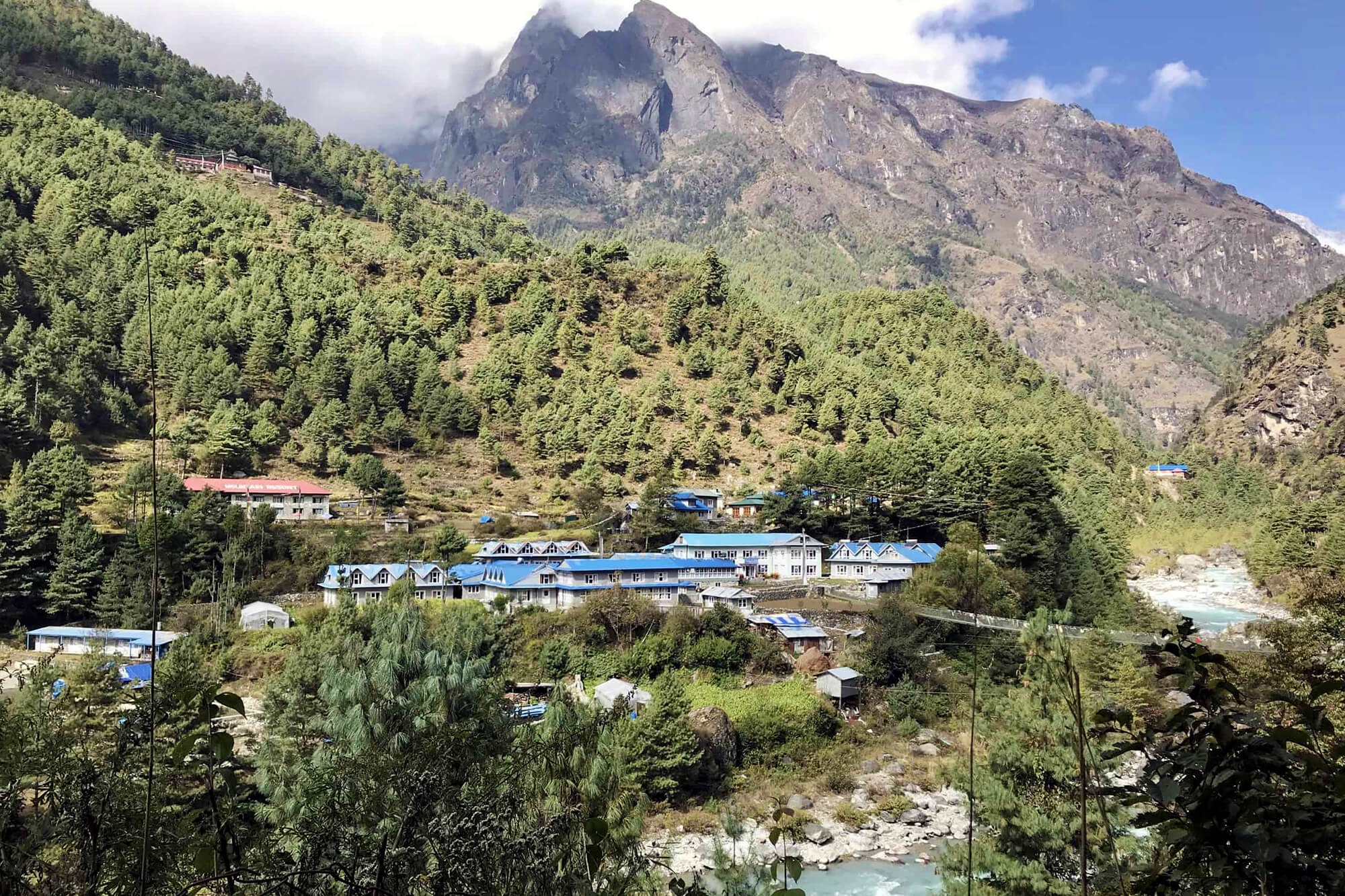 Phakding
PhakdingAfter an early breakfast head towards the domestic airport and head towards Lukla. A settlement perched on a hilltop. The flight offers an aerial view of lush green hills and valleys with the soaring Himalayan ranges stretching from Annapurna, and Makalu including Everest and other central ranges. Lukla is the starting point of various treks of the region. Upon landing at Luka meet up with your trekking crew.
After a brief rest start your trek towards the settlement of Phakding, the hike takes around 3 to 4 hours traversing across the lush hills of central Nepal. Once you reach Phakding head towards your accommodation and rest, later head out to explore the area.
Maximum Altitude: 2860m (Lukla)
Duration: 30 minutes flight, 3 hours trek
Meals: Breakfast, Lunch, and Dinner
Accommodation: Teahouse
 Namche Bazaar
Namche BazaarAfter breakfast starts your trek to Namche Bazaar, following the rapids of the Dudh Koshi River crossing multiple suspension bridges, and ascending through woodlands of Rhododendron, Oaks, Juniper, and Pine forest on a backdrop of snowcapped mountains peaks of Mt. Everest, Lhotse-Nuptse ridge, Thamserku and other peaks of the Khumbu region.
Upon reaching Namche head out to explore the region. The area has various vantage points showing a different perspective of the region's landscape. Later visit pubs and restaurants around.
Maximum Altitude: 3440m
Duration: 6 hours
Meals: Breakfast, Lunch, and Dinner
Accommodation: Teahouse
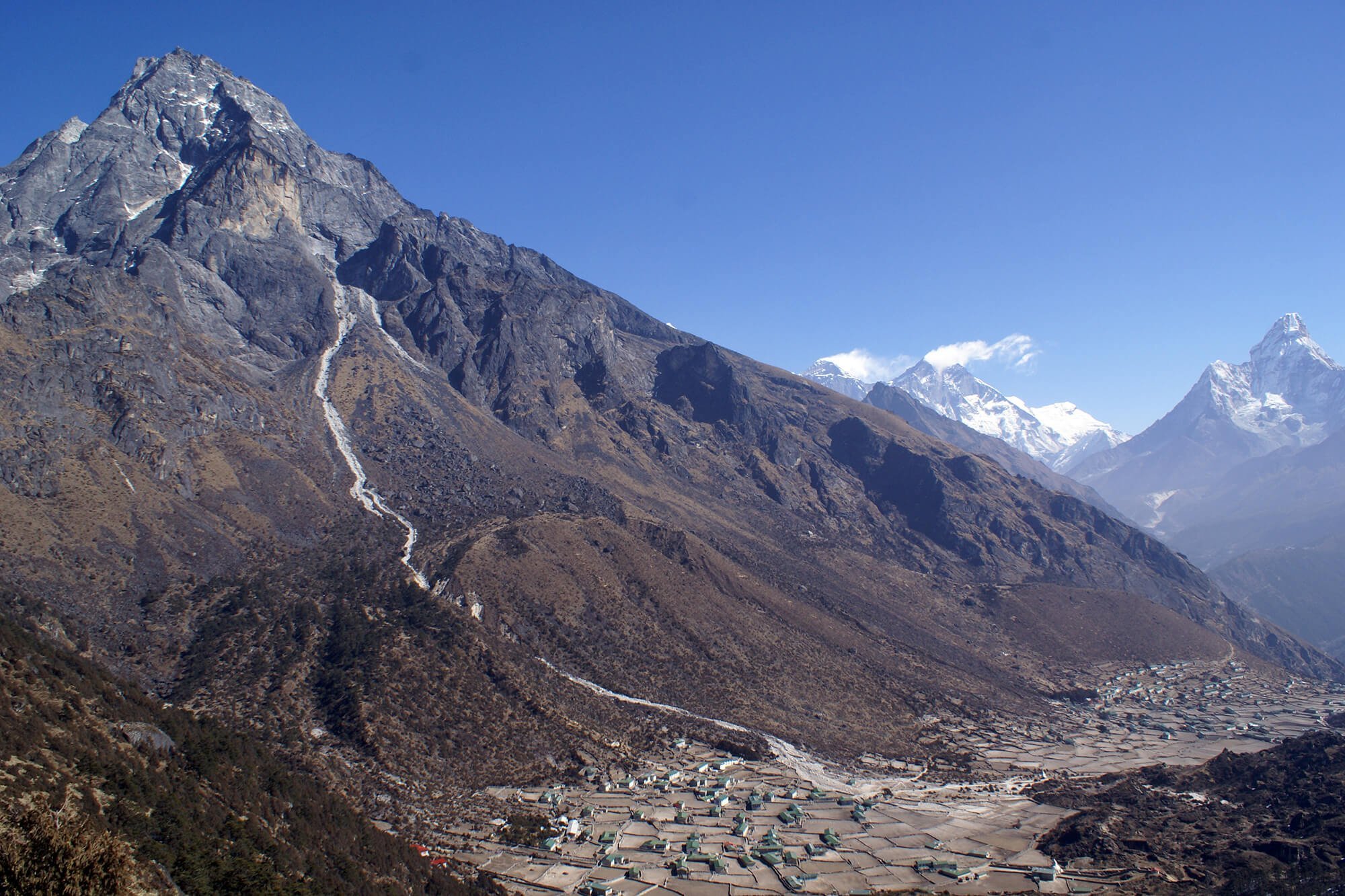 Khumjung Village
Khumjung VillageAt higher elevations, proper acclimatization is very crucial, due to the presence of thin air your body needs to acclimatize. There are various points in the village, perfect for an acclimatization excursion. A hike to Everest View Hotel and Syangboche monastery is regarded as a perfect excursion.
Everest View Hotel is listed on the world record as the highest placed hotel and offers a panoramic view of Mount Everest, Lhotse, AmaDablam, Nuptse, Thamserku, Kantega, Kusum Kangaru, Malan Phulan, Ombigaichan, Tawoche and others several mountains on Mahalangur range.
After basking in the views of the mountains, descend towards Khumjung village and visit the ancient Khumjung Monastery. The Monastery nestled what is regarded as a 400 year old “Yeti Skull”, which is kept inside a glass frame. After exploring the monastery head back towards Namche Bazaar.
Duration: 7 hours
Meals: Breakfast, Lunch, and Dinner
Accommodation: Teahouse
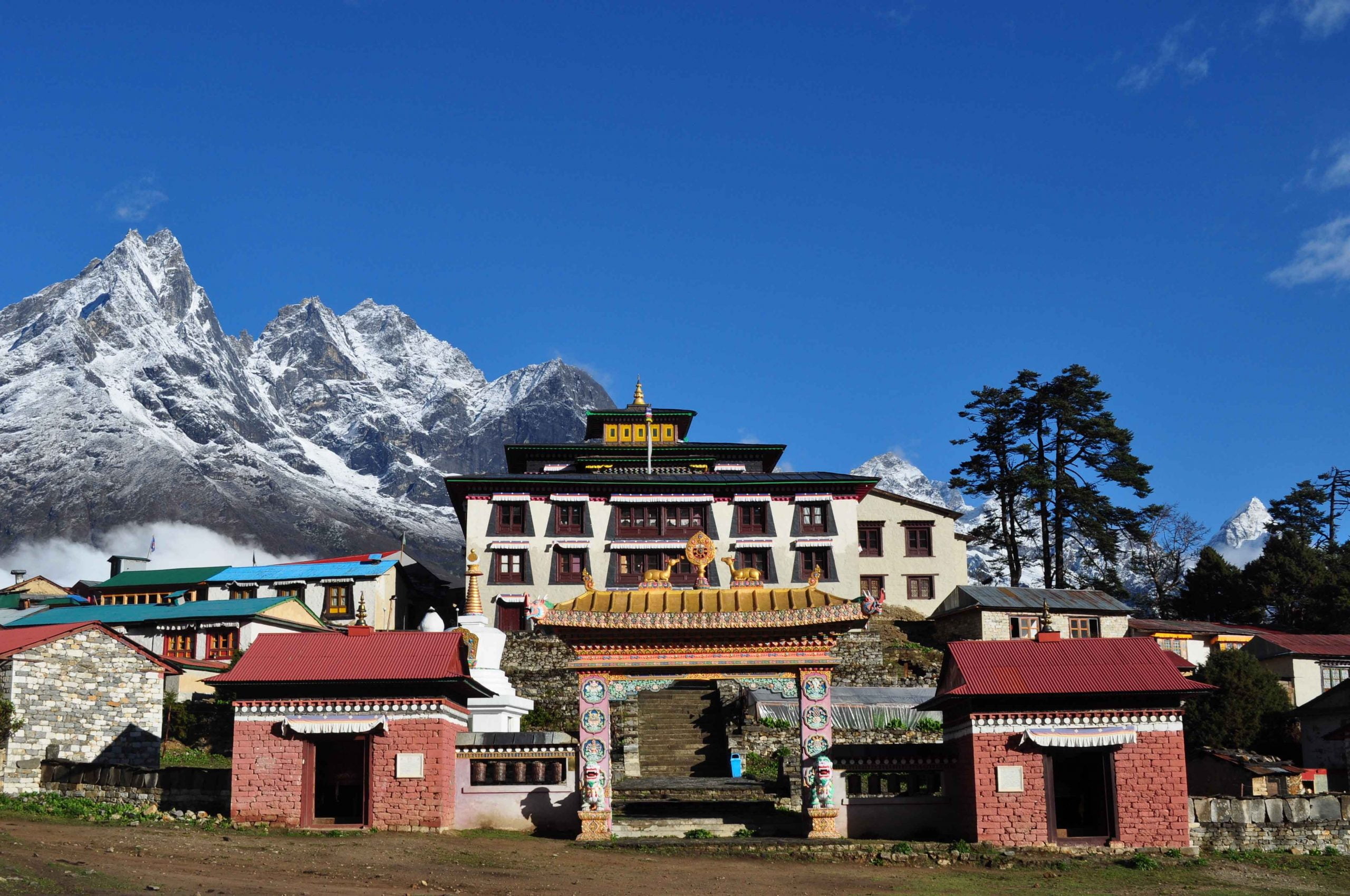 Tengboche Monastery
Tengboche MonasteryFollowing the dusty trail along a series of stairs, with Ama Dablam, Nuptse, Lhotse, and Mt. Everest on the backdrop head towards Tengboche. As you traverse along the trail you will come across a zig zag rocky path covered with dense woodlands. A brief walk and you will reach Tengboche hamlet, located at the intersection of the Dudh Koshi and Imja Khola rivers. As soon as you arrive in the village, check into your tea house.
After a brief rest head out towards Tengboche monastery nestled at an elevation of 3,860m/12,661ft with snowcapped mountains on the backdrop. The Tengboche Monastery is known as Dawa Choling Gompa, among locals, and is the largest monastery in Khumbu region. The Monastery was in 1916 and is currently a part of the Sagarmatha National Park’s Sacred Sites Trail project.
At the monastery witness magnificent old scriptures, sculptures, artwork, and wood carvings. Explore each and every corners decorated with stories and legends. Next, attend to the monks chanting sacred text and performing rituals. Also interact with the monks and the local’s getting insight about the culture and traditions. After exploring the monastery bask in the himalayan sunset. The rays of sun changing the white mountain peaks of Everest (8848m), Nuptse (7861m), Lhotse (8501m), Kwangde (6187m), Tawachee (6542m), AmaDablam (6812m) and other mountain peaks into an array of colors. Later on, return back to your tea house at Tengboche.
Maximum Altitude: 3867m
Duration: 5 hours
Meals: Breakfast, Lunch, and Dinner
Accommodation: Teahouse
 Monjo
MonjoAfter breakfast starts your trek, descending down to Phunki Tenga and eventually crossing the river. Along the trail enjoy the views and local Sherpa settlements, high farmlands, and monasteries up to the settlement of Monjo. After checking in leave your backpack at your tea house and head out to interact with the inhabitants.
Maximum Altitude: 2835m
Duration; 5 hours
Meals: Breakfast, Lunch, and Dinner
Accommodation: Teahouse
 Lukla
LuklaAfter breakfast, start your trek down towards Lukla, the trail takes you across sub-tropical wet hill woodlands of rhododendron, a mixture of conifers, oaks with orchid and fern draped trees. Passing along the rich and deep wilderness you will reach the settlement of Lukla. Upon reaching Lukla explore local villages, learn about Sherpa lifestyle and culture, or head towards any vantage point for mesmerizing views of the sunset. Later in the evening celebrate the success of your trek and last night in the mountains.
Maximum Altitude: 2860m
Duration: 3 hours
Meals: Breakfast, Lunch, and Dinner
Accommodation: Teahouse
 Lukla Airport
Lukla AirportAfter an early breakfast, head towards Lukla Airport and fly back to Kathmandu. The picturesque flight from Lukla to Kathmandu seems like a delight. Once you arrive at Kathmandu head towards your accommodation. Today you can stroll the city on your own or head on a guided tour. Later in the evening join in for a farewell dinner program to mark the success of your trek and the end of your adventure.
NOTE: All of the aforementioned trekking hours are approximations and should only be used as a general guideline.
Maximum Altitude: 2860m
Duration: 30 minutes flight
Meals: Breakfast, Lunch, and Dinner
Accommodation: Hotel

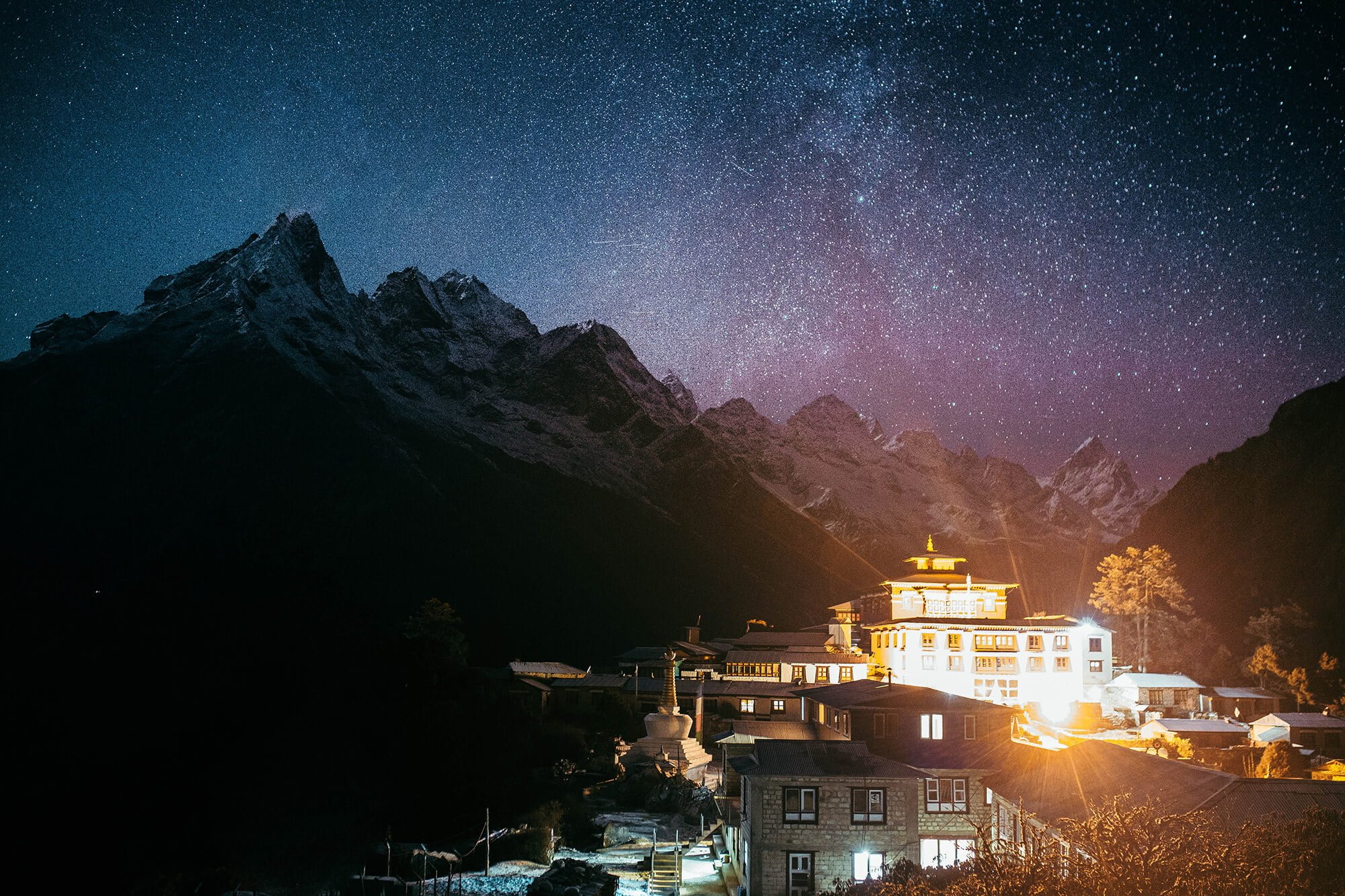
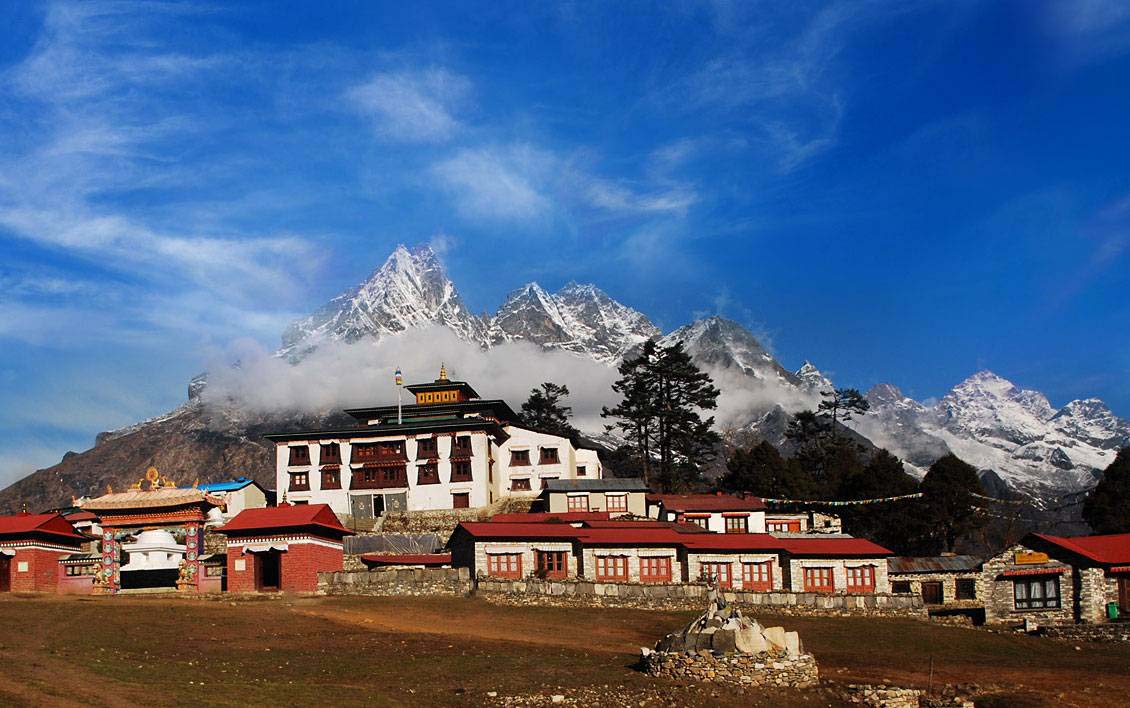








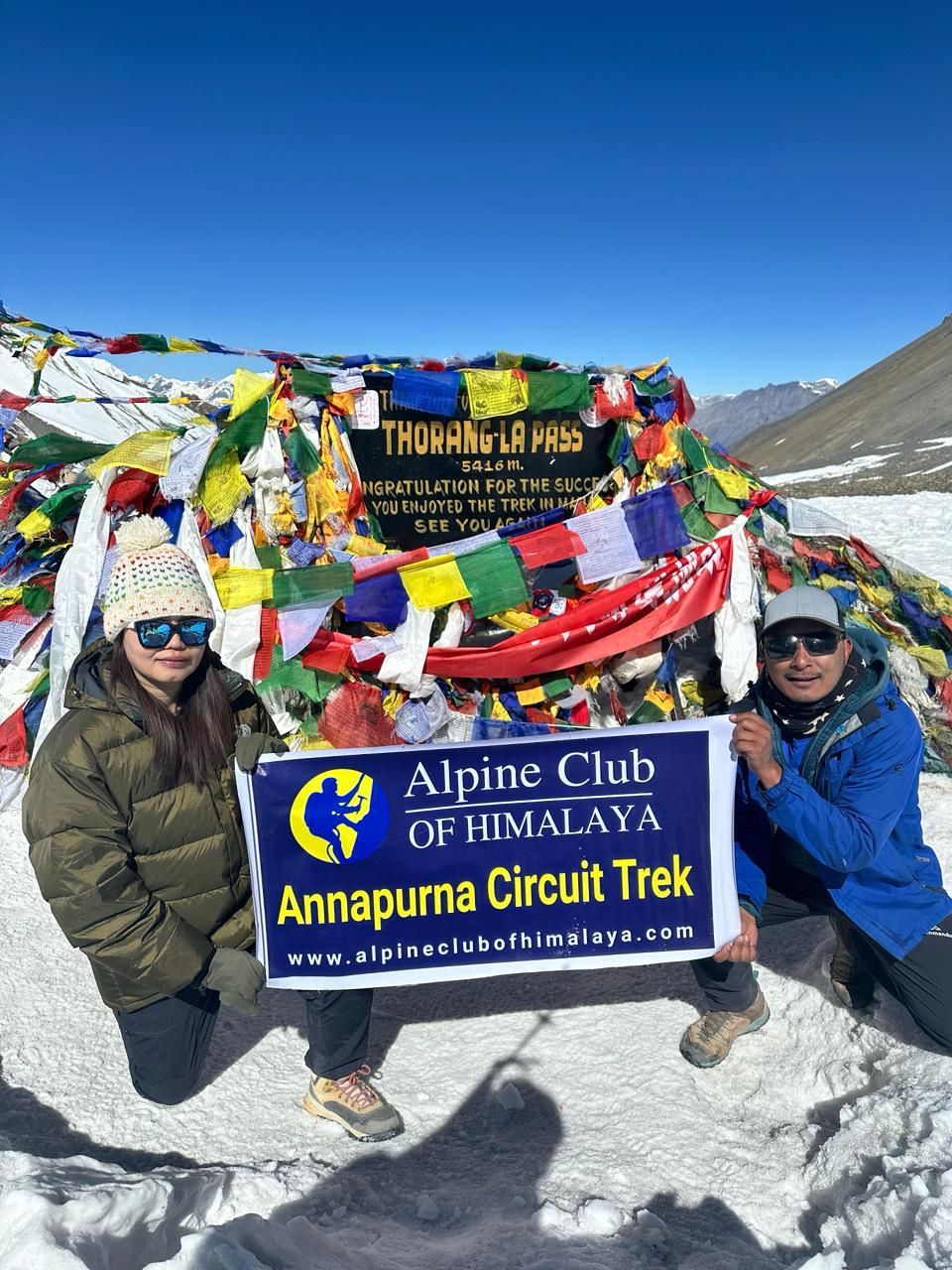
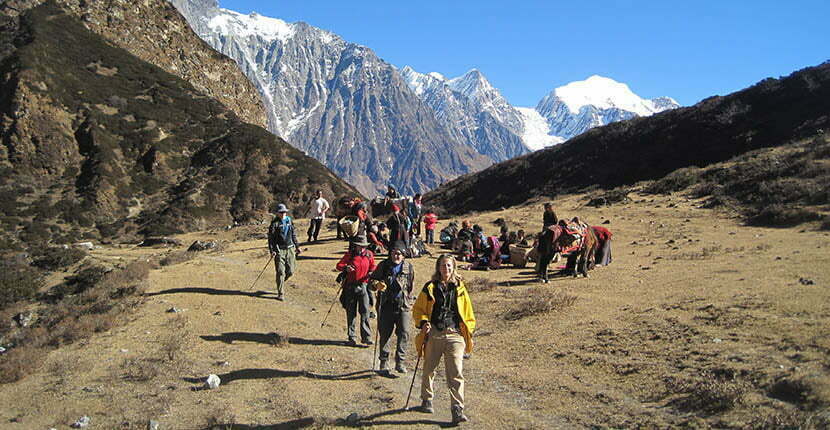
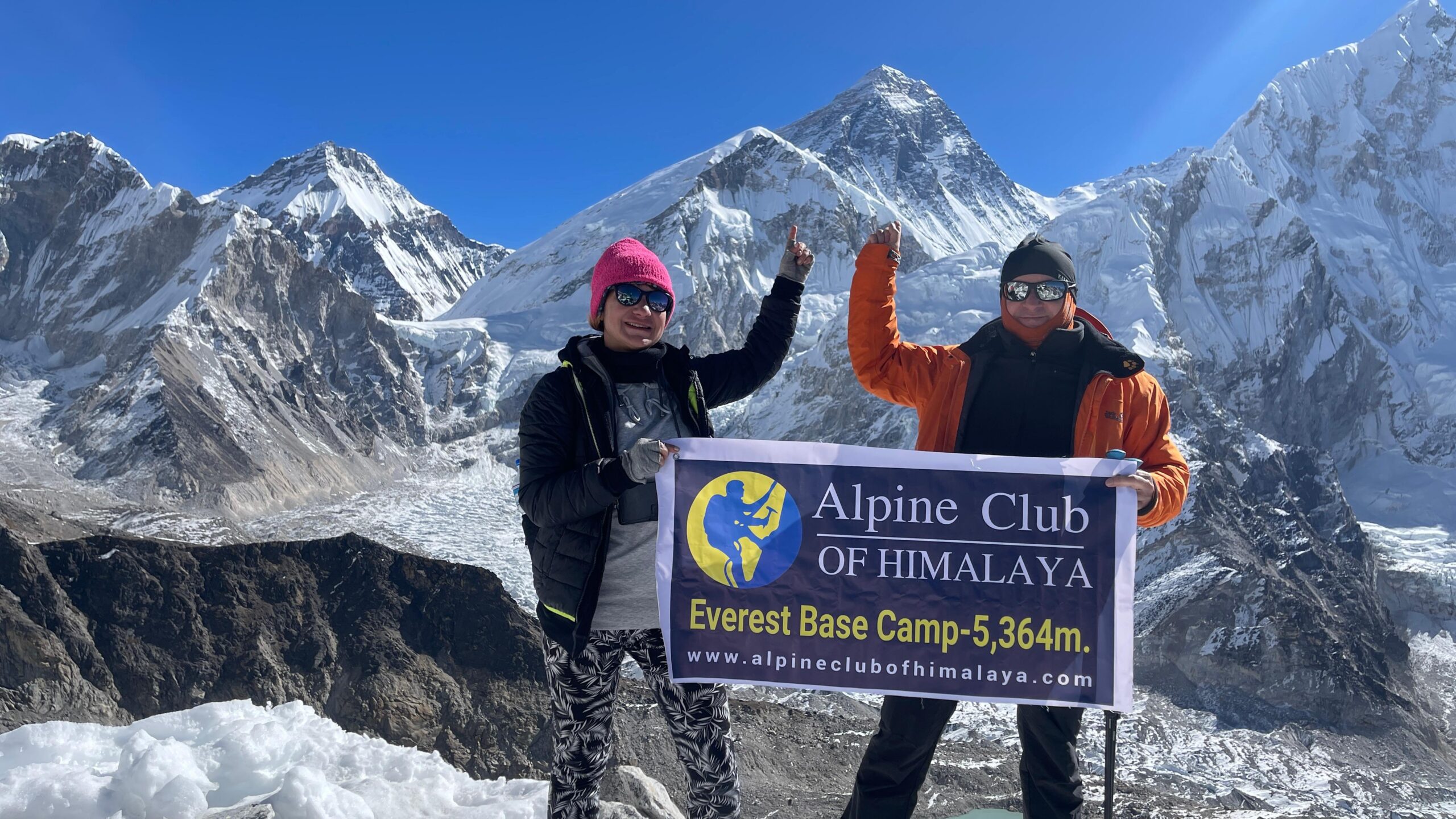


Write a Review